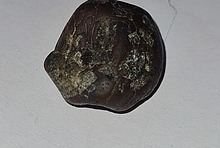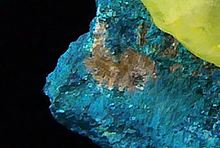Home PageAbout MindatThe Mindat ManualHistory of MindatCopyright StatusWho We AreContact UsAdvertise on Mindat
Donate to MindatCorporate SponsorshipSponsor a PageSponsored PagesMindat AdvertisersAdvertise on Mindat
Learning CenterWhat is a mineral?The most common minerals on earthInformation for EducatorsMindat ArticlesThe ElementsThe Rock H. Currier Digital LibraryGeologic Time
Minerals by PropertiesMinerals by ChemistryAdvanced Locality SearchRandom MineralRandom LocalitySearch by minIDLocalities Near MeSearch ArticlesSearch GlossaryMore Search Options
The Mindat ManualAdd a New PhotoRate PhotosLocality Edit ReportCoordinate Completion ReportAdd Glossary Item
Mining CompaniesStatisticsUsersMineral MuseumsClubs & OrganizationsMineral Shows & EventsThe Mindat DirectoryDevice SettingsThe Mineral Quiz
Photo SearchPhoto GalleriesSearch by ColorNew Photos TodayNew Photos YesterdayMembers' Photo GalleriesPast Photo of the Day GalleryPhotography
╳Discussions
💬 Home🔎 Search📅 LatestGroups
EducationOpen discussion area.Fakes & FraudsOpen discussion area.Field CollectingOpen discussion area.FossilsOpen discussion area.Gems and GemologyOpen discussion area.GeneralOpen discussion area.How to ContributeOpen discussion area.Identity HelpOpen discussion area.Improving Mindat.orgOpen discussion area.LocalitiesOpen discussion area.Lost and Stolen SpecimensOpen discussion area.MarketplaceOpen discussion area.MeteoritesOpen discussion area.Mindat ProductsOpen discussion area.Mineral ExchangesOpen discussion area.Mineral PhotographyOpen discussion area.Mineral ShowsOpen discussion area.Mineralogical ClassificationOpen discussion area.Mineralogy CourseOpen discussion area.MineralsOpen discussion area.Minerals and MuseumsOpen discussion area.PhotosOpen discussion area.Techniques for CollectorsOpen discussion area.The Rock H. Currier Digital LibraryOpen discussion area.UV MineralsOpen discussion area.Recent Images in Discussions
PhotosSamuelsonite - Palermo No. 1 Mine, Groton, Grafton Co., New Hampshire, USA
4th Mar 2012 01:41 UTCJoe Mulvey
I am reviewing the samuelsonite photos Knut's Samuelsonite because I do have a heck of a time distinguishing samuelsonite and palermoite. Both species have striations. I am under the impression that palermoite is more likely to be associated with rockbridgeite.
Most of my palermoite specimens are in the zone between triphylite and siderite. My only samuelsonite, a gft from Gene Bearss, is in a vug in massive quartz (next to a palermoite). This specimen and the surrounding matrix are so blindingly bright I can't imagine how I could possibly take a decent photo.
Most of my palermoites look like JBS's Palermoite
Note: striations, rockbridgite, abrupt termination and the goedkenites attached.
For me the determining factor for samuelsonite is the termination. Usually, palermoite terminates suddenly while samuelsonite has a more delicate prismatic termination. This image looks more to me like palermoite than samuelsonite, however I would be happy to stand corrected.
I also note that the mindat description for samuelsonite labels the color as pale yellow, however it can also be transparent to water clear.
Any insight is greatly appreciated!
Thank you,
Joe
4th Mar 2012 03:22 UTCJeff Weissman Expert
For what its worth, I agree with your observations on the terminations, I recently uncovered a samuelsonite, in some old material, that looks exactly like the first image on this page http://mindatnh.org/Samuelsonite%20Gallery.html
regards, Jeff
4th Mar 2012 14:49 UTCKnut Eldjarn 🌟 Manager
The pictured specimen of Samuelsonite was obtained from Larry Conklin who had received it as a gift in 1981 from a reliable source. I have also 2 specimens with Palermoites in the collection obtained from Curt Segeler. These have free-growing crystals with typical abrupt terminations and seems to be less striated than the pictured Samuelsonite. The pictured crystal of Samuelsonite is not terminated but on the same specimen there is a much smaller crystal exhibiting a prismatic termination not unlike what you can see on some hemimorphites (and similar to the pictures refered to by Jeff). But as with your specimen it would be very hard to capture this small terminated xl in a photo. Thus based on the information given to me with the specimen and these observations I will stick to the ID of the specimen as being Samuelsonite.
Knut
4th Mar 2012 21:11 UTCJoe Mulvey
Thank you for your response. I hope no offense was taken in my questioning the determining factors, as none was intended. The provenance on your specimens is impressive.
Hi Jeff, I too have been reviewing my palermoites to make sure what I saw was correct.
If anyone is interested, I have uploaded two new images.
Samuelsonite and Palermoite
Samuelsonite (?)
Again, if you feel my IDs are in error, I welcome the corrections.
Thank you,
Joe
4th Mar 2012 21:29 UTCKnut Eldjarn 🌟 Manager
by reviewing the photos and raising the questions you have contributed to me learning more about samuelsonite and palermoite. Thanks ! To me the pleasure of collecting minerals is all about enjoying the sharing of photos and information about minerals. Mindat is a great site for this activity.
cheers
Knut
5th Mar 2012 00:49 UTCJoe Mulvey
Joe




Mindat.org is an outreach project of the Hudson Institute of Mineralogy, a 501(c)(3) not-for-profit organization.
Copyright © mindat.org and the Hudson Institute of Mineralogy 1993-2024, except where stated. Most political location boundaries are © OpenStreetMap contributors. Mindat.org relies on the contributions of thousands of members and supporters. Founded in 2000 by Jolyon Ralph.
Privacy Policy - Terms & Conditions - Contact Us / DMCA issues - Report a bug/vulnerability Current server date and time: April 18, 2024 12:18:12
Copyright © mindat.org and the Hudson Institute of Mineralogy 1993-2024, except where stated. Most political location boundaries are © OpenStreetMap contributors. Mindat.org relies on the contributions of thousands of members and supporters. Founded in 2000 by Jolyon Ralph.
Privacy Policy - Terms & Conditions - Contact Us / DMCA issues - Report a bug/vulnerability Current server date and time: April 18, 2024 12:18:12












